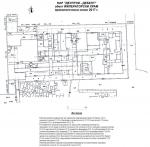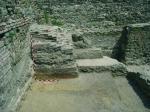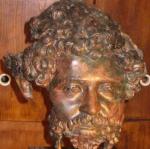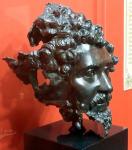Summary (English)
DEULTUM (Hristo Preshlenov – hristo.preshlenov@abv.bg) The explorations continued in the southeastern part of insula, to the north of the Roman thermae, in the area excavated during 1986 – 1990 and to the west of it. Rooms arranged in a line were documented to the south of the fortification wall; they had plinths of stones, walls built of sun-dried bricks, roofs covered with tiles and were burned after AD 498/517. Debris of a building was documented beneath, burned after AD 408/423. The debris was related to the wall whose foundations contained fragments of bricks, roof-tiles, marble veneer, an Ionic capital and window frames bonded with mortar. Sherds, including from dolia and amphorae, and terracotta and lead weights for fishing nets were found in the room paved with bricks arranged over a mortar bed, which was burned after AD 364/367. During 1986 – 1989 excavations in Trenches S3, S4 and S5, fragments from marble statues and from a bronze statue of Septimius Severus, and bases of statues of Philip the Arab and Otacilia Severa were discovered. In 2017, the foundations of two buildings were excavated: probably a temenos and the Temple of the imperial cult that functioned until AD 275 – 300. The first building was constructed of ashlars bonded with mortar. A provincial bronze coin of Hadrian minted in Tomis and a coin of Vespasian minted in AD 76 were found between the southern wall of the building and the northern stylobate of the decumanus. The second building was constructed of ashlars bonded with mortar. A rectangular structure built of bricks and plastered with hydraulic cement was discovered to the north of it. The structure was probably a cistern and was filled with fragmentary bricks, tegulae, nails, a terracotta tubular pila of a hypocaust, marble (including Proconnesian) window frames and veneer, fragments from torsos of bronze and marble statues, a mortarium, a stone pestle and sherds of the 2nd – first half of the 5th centuries AD. Rooms in a Late Roman house were discovered. Plaster painted in white and red was preserved on their walls. The rooms were reconstructed, probably during AD 350 – 375.
- Hristo Preshlenov - Archaeological Institute with Museum
Director
Team
Research Body
- Archaeological Institute with Museum






![Download [PDF]](/excavation/skins/fasti/images/results/download_sml.png)




